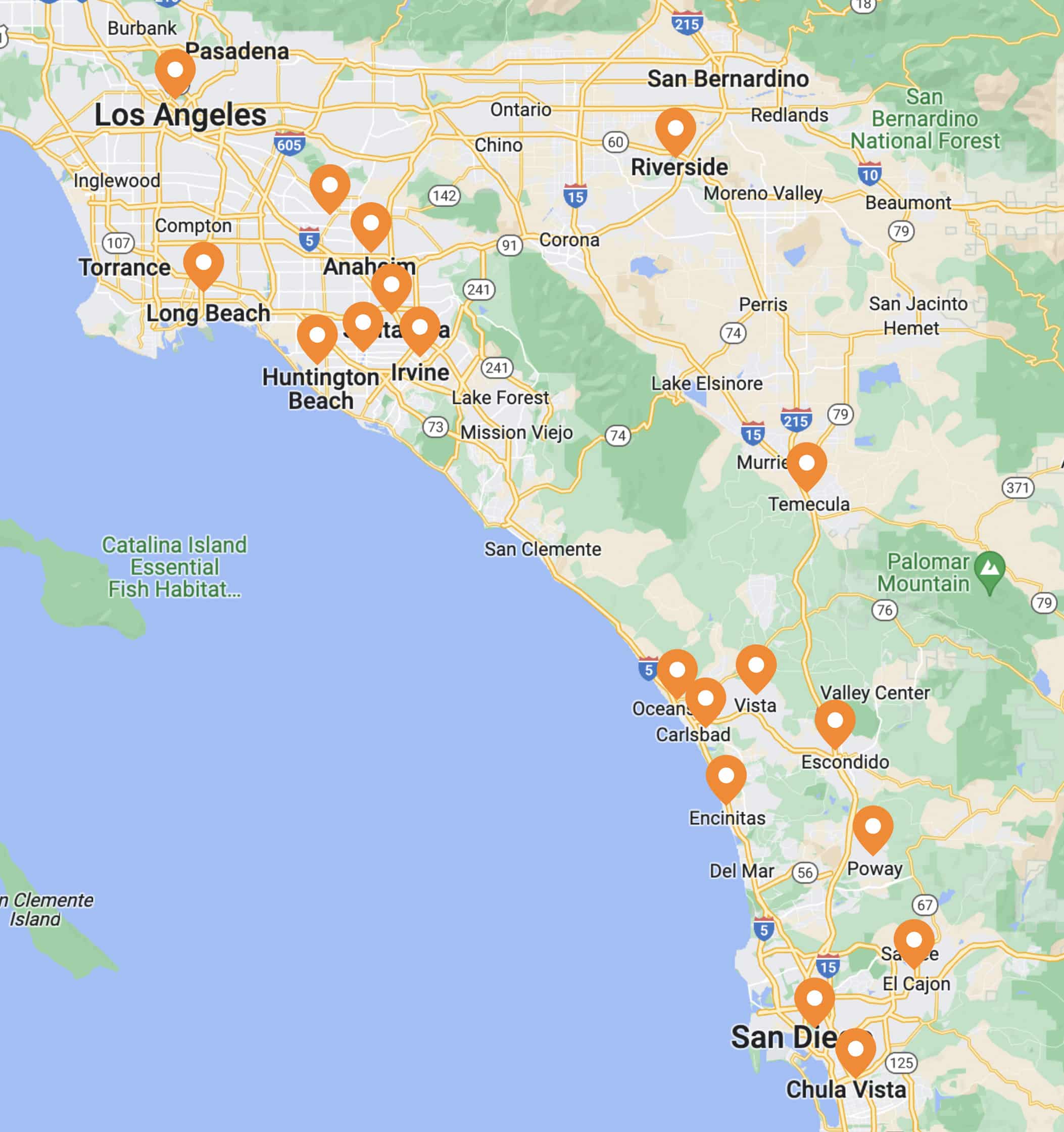
Should Wet Insulation Be Replaced?
Insulation is key in keeping your home comfortable and reducing energy usage. But it also faces various threats, with moisture being chief among them. Wet
Fill out the form or call at
There are many choices of insulation for your attic, mainly depending on what area of the attic needs insulation. We can inspect an older home’s insulation and find out if the insulation needs to be replaced. We can also optimize your newer or existing home to build the optimum level of insulation and comfort for years to come!
One type of insulation is blown-in or loose-fill. This type of insulation is ideal for unfinished attics. A large tube blows out insulation and can be distributed to the hard-to-reach areas in your attic. Blown-in insulation is an affordable option that is easy to install.
Batting is blanket insulation that comes on a roll and is great for unfinished spaces. You may be familiar with this type of insulation, as it is usually pink or yellow in color. It keeps heat or cold from passing through, trapping it in its fibers, and is known for being long-lasting. The difference between the batts and the rolls is that batts are already pre-cut.

Before installing new attic insulation, our technicians will do a thorough audit of the entire attic space. We’ll look for areas of homeowners’ biggest concerns including the signs of dust, debris, mold or animal infestations. We’ll find holes or cracks in the roof, inspect ductwork, and see if your HVAC system is working too hard to heat and cool your home.
Rodents love finding their way inside your attic to nest in warm insulation. Our trained technicians can easily spot the evidence of a rodent infestation in your attic. When rodents nest, the urine and feces left behind contain harmful pathogens that can make you and your family ill. We’ll check out the damage to your insulation and recommend replacement if needed.
For the best protection, Attic Project offers rodent-proofing services to seal up holes and cracks to keep rodents and other animals from returning. Our attic cleaning then sanitizes your attic to remove the germs and bacteria.
Excess moisture can lead to moldy, damaged insulation. Our technicians are trained in the latest mold remediation techniques. We’ll find the sources of water and moisture, clean and remove the mold using chemicals, or recommend insulation installation.
Once our attic professionals are certain no mold or pests remain, we then get to work on installing the insulation. The process can take a few days, depending on the size of your attic, or if additional attic cleaning is needed.
Orange County | Seattle | Everett | San Diego
Attic Cleaning | Attic Sanitation | Mold Remediation | Attic Insulation Installation | Water Damage Restoration | Attic Insulation Removal | Radiant Barrier Insulation | Air Duct Sealant & Repair | Rodent Proofing & Removal | Attic Remodeling & Storage | Attic Stairs & Doors | Asbestos Removal
If it seems like you are spending too much on your heating and cooling bills, it might be time for new insulation. Don’t tackle this project on your own, and instead, call on the help of attic professionals who can get the job done right.
Our technicians will come out and give you a free, no-obligation quote. Need insulation installation or other attic services? Contact Attic Projects today. We stand by our work with a 100% guarantee.




★★★★★
The entire team at Attic Projects were amazing to work. We hired them to sanitize and install vapor barriers in our basement/crawl space. Joe was our project manager and he did an outstanding job in putting a plan together for us. He was always available to help with any questions. Joe presented every detail clearly and put us at ease with the plan. The team who executed the work were outstanding. Special thanks to Jeremy, Frankie and Oscar for all their hard work. They showed up on time, and were fully prepared to get the project done within the scheduled timeline.
Overall, I have nothing but great things to say about Attic Projects.

★★★★★
Attic Projects has taken care of us throughout the entire process. From every step of the way from our Rep Paul, team lead Jeremy, and his entire team including Frankie, Oscar, Richard, and Paul, the team has taken care of our immediate needs. Jeremy's team identified entry points inside and out. The team spent the entire day painstakingly sealing every possible entry point for vermin. The team left our property clean and orderly. I cannot say enough about this group!

★★★★★
I am very satisfied with the job Attic Projects did for me, they delivered as promised. My attic looks great, it’s clean, sanitized, secured(no more rats!), completely sealed and insulated. The security of a ten year warranty gives me added confidence in their good work. Kevin, the project manager was punctual and thorough as he explained the process and saw the job through. He and the crew were very respectful and polite, which was very important to me. Great service like that is hard to come by these days! Thank you all soo much!!





At Attic Projects, the cost of crawl space insulation installation can vary based on several factors, including the size of the space that will be insulated, the insulation material chosen, and any additional services required. Our experts can provide a personalized quote after assessing your specific needs during your free consultation.
For attic or crawl space insulation, the recommended material often depends on factors such as climate, budget, and specific needs. We offer many types of insulation, including blown-in or loose-fill, batt and rolls, foam board, and reflective. In California and Washington, where climates can differ, our experts may recommend specific types in order to effectively regulate indoor temperatures.
Whether existing insulation needs to be removed before installing new insulation depends on its condition. If the current insulation is damaged, contaminated, or outdated, removal may be necessary to ensure the optimal performance of the new insulation. During our free comprehensive assessments, our professionals determine the quality of existing insulation so we can recommend removal whenever necessary to ensure that new insulation is effective and lasts for decades to come.
Even though it’s not required by law, installing insulation between ceilings and floors is strongly advised for energy efficiency and sound control. Our team at Attic Projects specializes in assessing the unique insulation needs of various spaces. We can provide solutions tailored to your space that increase your energy efficiency and make your living space more comfortable.
We doubt that you’ll need us again, but if you do — we got you covered.

*Insulation materials qualify for our 20 Year Warranty

We doubt that you’ll need us again, but if you do — we got you covered.
*Insulation materials qualify for our 20 Year Warranty
Rodents are a nightmare for any homeowner. They can lower the value of your home by causing serious damage, foul odors, and extensively unsanitary conditions. They also pose a significant health risk to you and your family by spreading disease and causing illness. The last thing you want is to waste your time removing rodents, only to have them move right back in. At Attic Projects, we not only humanely remove the rodents and pests from your home, but we also rodent-proof your home so they can’t come back. In order to keep the pests and rodents out permanently, you have to close up every entry point that they may squeeze into. Call Attic Projects today to get your free estimate.
Fill out the form or call us at

Insulation is key in keeping your home comfortable and reducing energy usage. But it also faces various threats, with moisture being chief among them. Wet

Summer may be a time of refreshing swims and exciting road trips, but the season also brings many challenges for homeowners. In particularly humid climates,

HISTORY OF FIBERGLASS INSULATION Fiberglass insulation, a material widely used in modern construction, has a history that dates back to the 1930s. The Owens Corning
